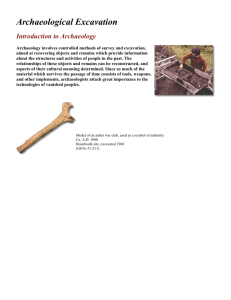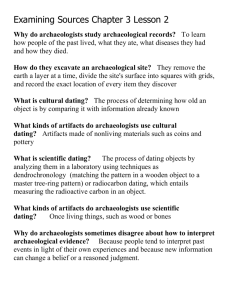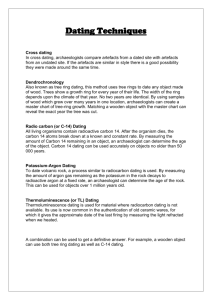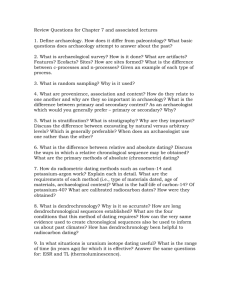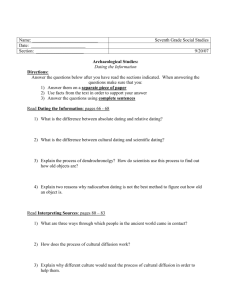HOW OLD IS IT
advertisement
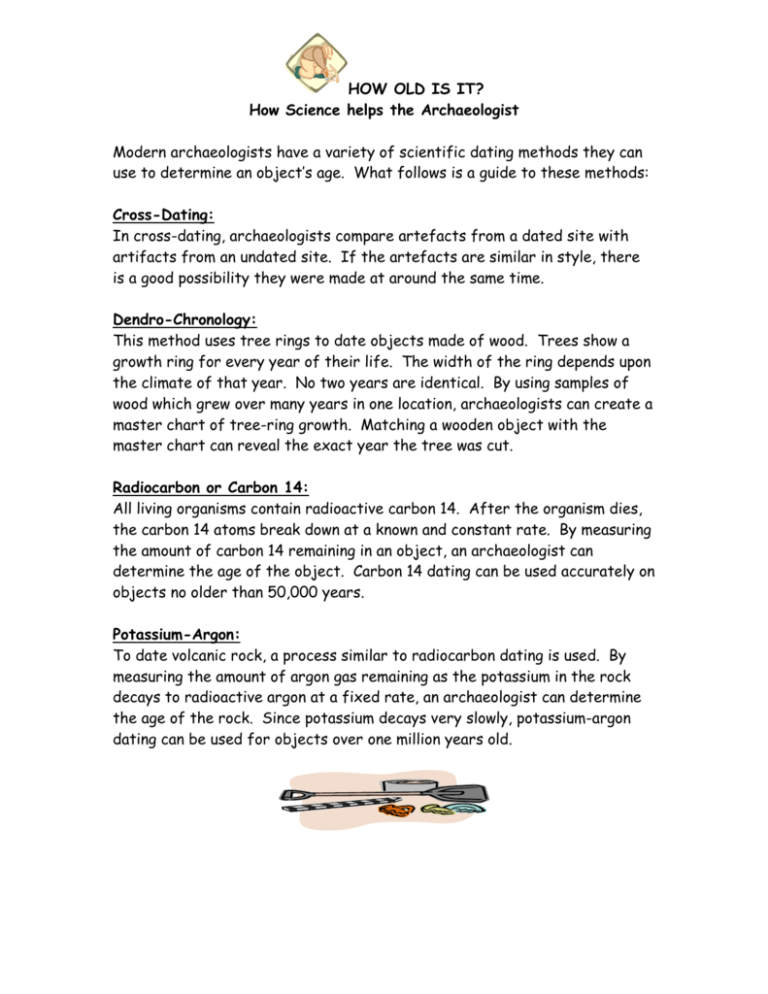
HOW OLD IS IT? How Science helps the Archaeologist Modern archaeologists have a variety of scientific dating methods they can use to determine an object’s age. What follows is a guide to these methods: Cross-Dating: In cross-dating, archaeologists compare artefacts from a dated site with artifacts from an undated site. If the artefacts are similar in style, there is a good possibility they were made at around the same time. Dendro-Chronology: This method uses tree rings to date objects made of wood. Trees show a growth ring for every year of their life. The width of the ring depends upon the climate of that year. No two years are identical. By using samples of wood which grew over many years in one location, archaeologists can create a master chart of tree-ring growth. Matching a wooden object with the master chart can reveal the exact year the tree was cut. Radiocarbon or Carbon 14: All living organisms contain radioactive carbon 14. After the organism dies, the carbon 14 atoms break down at a known and constant rate. By measuring the amount of carbon 14 remaining in an object, an archaeologist can determine the age of the object. Carbon 14 dating can be used accurately on objects no older than 50,000 years. Potassium-Argon: To date volcanic rock, a process similar to radiocarbon dating is used. By measuring the amount of argon gas remaining as the potassium in the rock decays to radioactive argon at a fixed rate, an archaeologist can determine the age of the rock. Since potassium decays very slowly, potassium-argon dating can be used for objects over one million years old. Exercise: Below is a list of objects you might find in an excavation. Which dating techniques would you use? Object Dating Techniques 1. Bronze axe blade ______________________________ 2. Piece of charcoal ______________________________ 3. Skull Fragment ______________________________ 4. Roof Beam ______________________________ 5. Decorated pottery bowl ______________________________ 6. Fossil in lava rock ______________________________ 7. Wooden sarcophagus ______________________________ 8. Layer of volcanic deposits ______________________________ 9. Dried grain ______________________________ 10. Leather sandal fragment ______________________________

